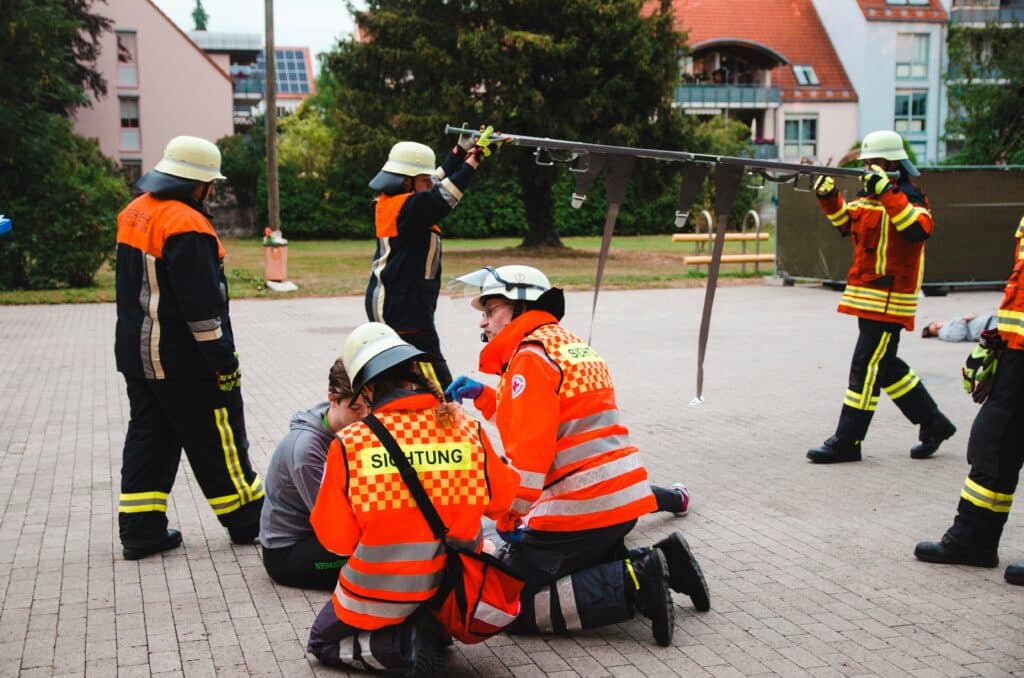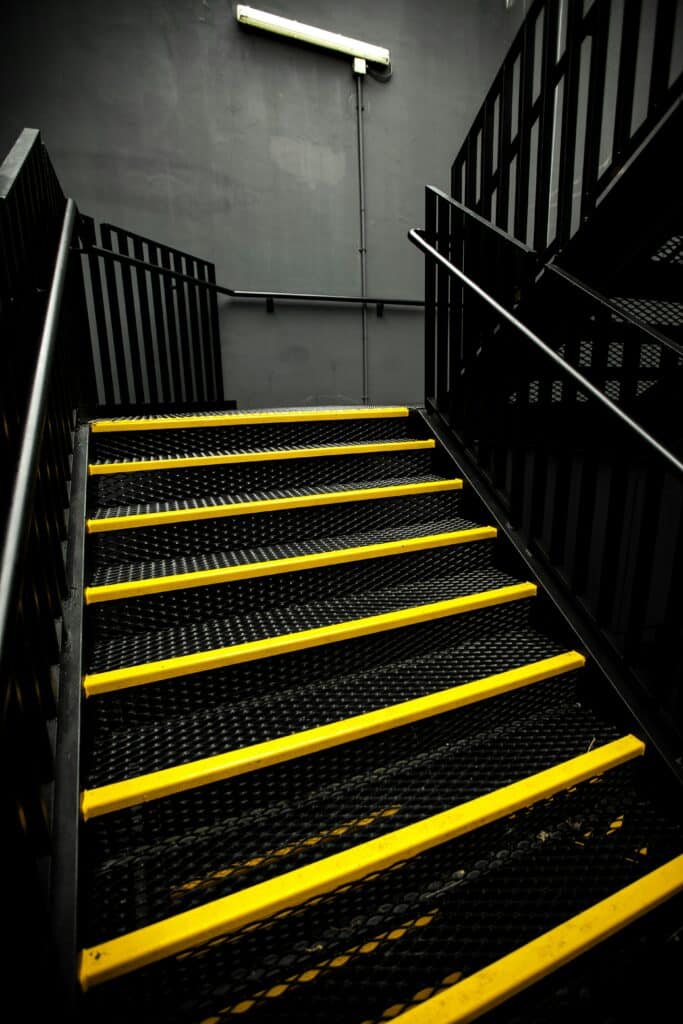We have been asked on many occasions how many people would we recommend to operate an evacuation chair safely for the user and the operators. We have tried and tested the use of the chair hundreds of times and come to the same conclusion every time. “You should never leave one person to operate an evacuation chair”.
There are multiple factors to consider.

Weight of the user
Depending on the weight of the person in the chair (the user), the operator can become very tired and may need to change over to the second person. Particularly if they are travelling down several flights of stairs.
Sometimes when the user is heavy, the chair can run away from the operator, resulting in it lying flat on the ground. A single person cannot return the chair to an upright operational position without serious risk to the user and themselves.
Competence
Unless you are using the chair day in and day out, you will never master it enough to operate it on its own, our own experience when training and with feedback from clients when they train, is that, on many occasions, the chair can run away from the operator resulting in it dropping to the ground. As mentioned above, one individual user would not be able to lift the person back up into the operational position without risk of manual handling injuries.
Chair Run Away/Blocked Stairwell
If the chair does run away and falls into the flat position on the ground with the user still in it, the escape stairwell could be blocked. You have now put the operator of the chair in a predicament, do they evacuate and leave the person on the stairs or do they try to return the chair back to an upright position, risking injury, possibly resulting in two injured people in the stairwell?
Toppling Chair
If the operator of the chair overshoots the leading stairwell there is a possibility the chair could fall forward toppling down the stairs with the user in it. Also, it’s quite common for the user of the chair to grab hold of the handrail causing the chair to swivel and fall forward. Having the second person in front to act as a spotter can prevent this from happening by simply holding onto the rail and placing a hand in front of the user to stop it from toppling.
Real Emergency
In a real emergency, the operator of the chair and the user can panic, having a second person to help an operator of the chair offers reassurance. Also, if the chair topples or falls flat on the ground and cannot be put back into the upright operational position, the second person can go for help.
Transferring a person to an Evac chair
If you have to transfer a person from a wheelchair to an Evac chair, you will typically need two people to do this, in fact, it’s more likely that you will need three people, two people to lift the user and one person to pull out the wheelchair and replace it with the evacuation chair, allowing the two operators to lower the user into the evacuation chair.

These are just some of the considerations that the manufacturers have not told you or they have not even considered themselves.
There are many other factors that you must consider before even selecting the chair, for example, the stairs will have to be wide enough to operate the chair, the landings have to be wide enough to allow the chair to turn, you cannot have any turns on the stair, stairs cannot be spiral and evacuation chairs do not work going upstairs, (you might think this is obvious that they do not go upstairs, however, we have come across evacuation chairs been sold to our clients in nursing homes on the bases they could use them to evacuate clients/users up stairwells).
When we get called by our clients requesting training, more often than not they have been sold the Evacuation Chair without any consideration being given to the need to have it in the first place, they haven’t considered the suitability of the premises (stairwells, corridors, landings etc) or indeed the need of the user (some wheelchair users simply cannot use an evacuation chair, and instead are better to be placed into a disabled refuge).
I hope this information helps, and gives you a better understanding of why we would recommend that you should never have one person operating an evacuation chair.
There might be a rare circumstance where one operator is acceptable, this is where the operator is physically very strong, the user is light, they have practiced over and over again, they don’t have to negotiate a lot of stairs, landings are wide enough, and egress from the building is also suitable. Otherwise, a minimum of two people is best.
Final thought, even if the manufacturer recommends one person using the evacuation chair, the company/employer is still required to carry out risk assessments (both emergency and manual handling) taking into account all the issues we mentioned above and any other foreseeable issues. If your risk assessment does not identify any hazards associated with the use of the evacuation chair using one operator only, and somebody has an injury and it is obvious that there should have been two people, the responsibility will lay with the employer which could lead to litigation and even criminal culpability depending on how serious the injury is.

